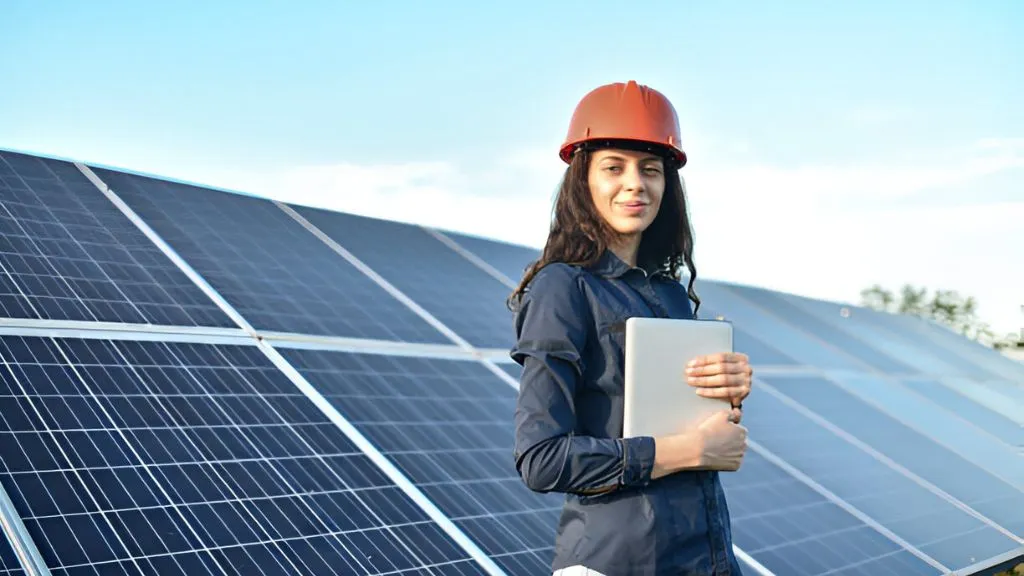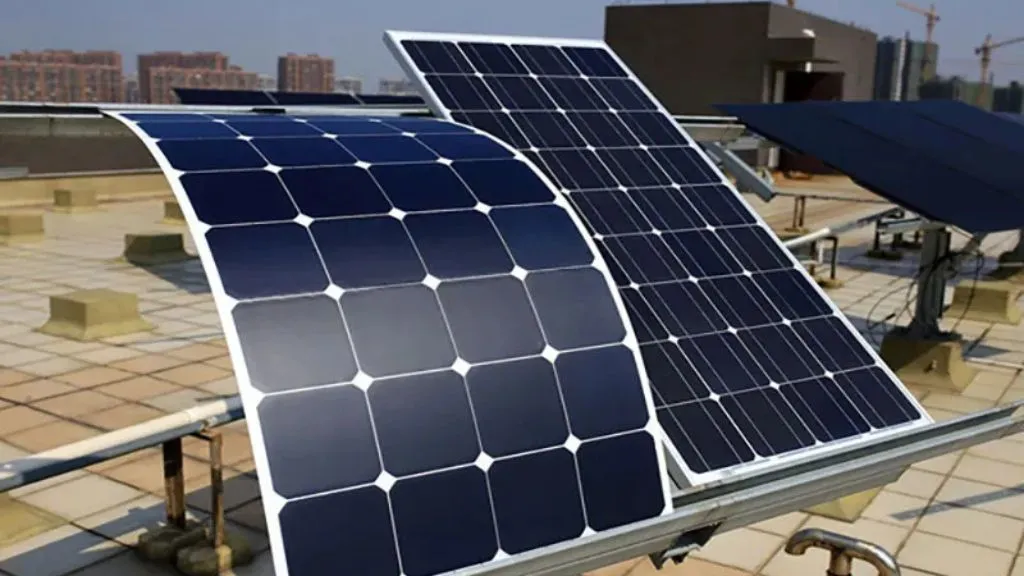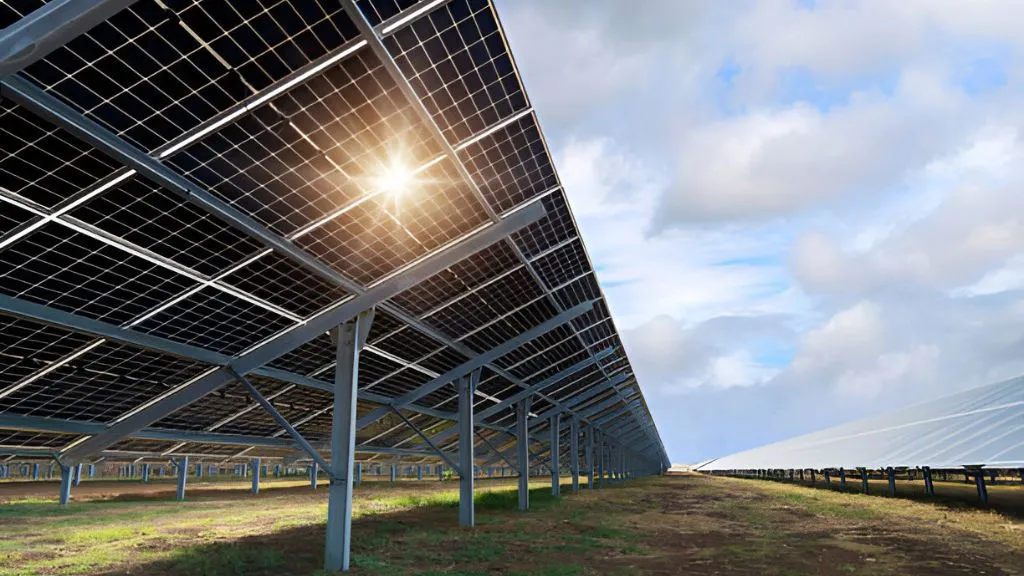
Solar panels are at the forefront of renewable energy solutions, enabling households, businesses, and industries to adopt clean, sustainable power sources. As the global demand for energy grows, so does the emphasis on transitioning to eco-friendly technologies. Solar panels provide an efficient and cost-effective way to harness the sun’s energy, contributing to environmental preservation and energy independence.
Understanding the various types of solar panels is crucial for making an informed decision. This guide explores the key types of solar panels, their specifications, benefits, pricing, and ideal use cases. Whether you’re looking for a solution for residential rooftops or large-scale commercial applications, this detailed overview will help you choose the right solar technology.
Read on How do Solar Panels Work?
Why Solar Panels are Essential?
Solar panels have become indispensable due to their versatility and sustainability. They cater to a wide range of applications, including:
- Residential Use: Powering homes with green energy, reducing dependency on traditional electricity.
- Commercial Applications: Cutting operational costs for businesses while showcasing corporate responsibility.
- Industrial Usage: Supporting energy-intensive operations with scalable solar solutions.
- Off-Grid Areas: Delivering electricity to remote locations without conventional grid access.
- Agricultural Needs: Powering irrigation systems, pumps, and other farming equipment.
Solar technology not only reduces energy bills but also plays a significant role in minimizing carbon footprints, making it a vital solution for modern energy challenges.
Types of Solar Panels and their Specifications
There are five main types of solar panels, each offering unique advantages. Here’s a detailed look at each type:
1. Monocrystalline Solar Panels

Monocrystalline solar panels are renowned for their efficiency and long-lasting performance, making them one of the most sought-after types of solar panels globally. These panels are manufactured from a single continuous crystal structure, which is why they have a uniform black appearance. The process starts with high-purity silicon that is melted and formed into cylindrical ingots. These ingots are sliced into thin wafers, which are then used to create solar cells.
Specifications:
- Efficiency: 15-22% – Monocrystalline panels are known for their high efficiency, which makes them a top choice when space is limited. Their ability to produce more energy per square foot makes them ideal for urban settings and residential rooftops.
- Lifespan: Over 25 years, with minimal degradation. This makes them a reliable, long-term investment.
- Performance: They perform exceptionally well in low-light conditions, such as cloudy days, and are also highly effective in hot climates due to their ability to maintain efficiency in high temperatures.
Advantages:
- High Energy Output: Due to their high efficiency, monocrystalline panels generate more electricity per square foot, making them an excellent choice for areas with limited space for solar installations.
- Aesthetics: The sleek black design of these panels integrates seamlessly with modern home designs, making them popular for residential applications where visual appeal is important.
Best Applications:
- Residential rooftops: If you have limited space but want to maximize your solar energy production, monocrystalline panels are the best choice.
- Urban Areas: These panels are ideal for cities and other densely populated areas where space for installation is limited.
Pricing: INR 40 to INR 60 per watt
Monocrystalline panels may come at a higher initial cost, but their long-term efficiency, durability, and aesthetic appeal make them a worthwhile investment for those looking for the best value in the long run.
2. Polycrystalline Solar Panels

Polycrystalline solar panels are a more cost-effective alternative to their monocrystalline counterparts. These panels are made from silicon crystals that are melted together, forming a multi-crystal structure. This manufacturing process is less expensive compared to the single-crystal method used for monocrystalline panels.
Specifications:
- Efficiency: 13-18% – While they are less efficient than monocrystalline panels, they still provide a reliable energy source for residential and commercial purposes.
- Lifespan: Slightly shorter than monocrystalline panels but can last around 20-25 years with proper maintenance.
- Performance: They perform well under standard sunlight but are not as effective in low-light conditions as monocrystalline panels.
Advantages:
- Cost-Effective: The primary benefit of polycrystalline panels is their affordability, making them ideal for those on a budget or for large-scale installations where space is not a limitation.
- Environmentally Friendly Production: The process of manufacturing polycrystalline panels uses less energy compared to monocrystalline, making them a greener option.
Best Applications:
- Large Installations: Polycrystalline panels are well-suited for large-scale solar farms or businesses with ample roof space for solar panel installations.
- Residential and Commercial Setups: For homeowners or businesses who need a reliable but more budget-friendly solar solution, polycrystalline panels are a practical option.
Pricing: ₹35-45 per watt
Polycrystalline panels provide an excellent balance between cost and performance, making them a great choice for large installations or those with a limited budget but who still seek efficient solar power.
3. Thin-Film Solar Panels

Thin-film solar panels represent one of the most flexible types of solar panels in terms of installation and application. These panels are made by layering thin photovoltaic material, such as cadmium telluride (CdTe) or amorphous silicon, onto a substrate material like glass or plastic. This design allows for the production of flexible and lightweight panels that can be adapted to a variety of settings.
Specifications:
- Efficiency: 7-13%—While the efficiency of thin-film panels is lower than both monocrystalline and polycrystalline panels, they still provide a viable option in certain scenarios.
- Weight: Thin-film panels are versatile and lightweight, ideal for unconventional setups like curved surfaces or portable applications.
- Performance: These panels are designed to perform well in high-temperature environments, which can be a key advantage in hotter climates.
Advantages:
- Flexibility: The lightweight and flexible nature of thin-film solar panels makes them easy to install in a variety of environments, including mobile setups or temporary installations.
- Adaptability: Thin-film panels work well in high-temperature conditions, making them suitable for warmer climates or regions that experience extreme heat.
Best Applications:
- Portable Solar Setups: Thin-film solar panels are great for portable applications, such as solar-powered backpacks, tents, or off-grid systems.
- Large-Scale Industrial Projects: Because of their flexibility and lightweight nature, they are ideal for installation in areas with irregular surfaces or large rooftops.
Pricing: ₹30-40 per watt
Thin-film panels offer an affordable, adaptable solution, especially when lightweight, portable, or low-efficiency options are needed.
4. Bifacial Solar Panels

Bifacial solar panels are a relatively newer technology in the solar industry. These panels capture sunlight from both sides—front and rear—enhancing energy production. The design incorporates solar cells on both sides of the panel, with a transparent back that allows light to pass through and be absorbed by the rear cells. This results in higher energy yield, especially when installed in areas with reflective surfaces.
Specifications:
- Efficiency: Higher than standard monofacial panels due to dual-sided energy capture, improving overall energy output.
- Durability: Bifacial panels are often encased in robust glass, offering resistance to environmental conditions and durability over time.
Advantages:
- Enhanced Energy Output: Bifacial panels can produce 10-30% more energy than traditional solar panels because they can capture reflected sunlight from the ground or surrounding environment.
- Durability: These panels are designed to be more durable, with resistance to environmental wear and tear like dust, dirt, and moisture.
Best Applications:
- Open Installations with Reflective Surfaces: Bifacial solar panels work exceptionally well in areas where the ground is reflective, such as snowy regions or places with white gravel.
- Commercial and Industrial Projects: For large-scale installations that aim to maximize energy production, bifacial panels are an ideal solution.
Pricing: ₹50-70 per watt
5. PERC Solar Panels (Passivated Emitter and Rear Cell)

PERC solar panels are an advanced version of traditional monocrystalline or polycrystalline panels. They are equipped with an additional layer of passivation on the rear of the cells, which improves light absorption and reduces energy loss. This technology increases the overall efficiency and performance of the panels.
Specifications:
- Efficiency: Higher than standard panels, even in low-light conditions, with efficiency levels around 18-22%.
- Technology: The passivation layer helps enhance the energy conversion process by reflecting unused light back into the cell.
Advantages:
- Improved Efficiency: PERC technology allows for better light absorption and conversion, especially in low-light conditions, making them ideal for regions with inconsistent sunlight.
- Better Performance: Performs exceptionally well in areas with variable sunlight, allowing for more reliable energy production.
Best Applications:
- Residential and Commercial Setups: For homeowners and businesses seeking a balance between cost and performance, PERC panels offer an excellent option.
- Locations with Variable Sunlight: Ideal for regions where sunlight exposure varies throughout the day or season.
Pricing: ₹45-55 per watt.
PERC solar panels combine cutting-edge technology with solid efficiency, making them a great option for those looking to invest in long-term, reliable energy solutions.
What are the Environmental Benefits of Solar Panels?
Solar panels are a cornerstone of sustainable energy solutions, offering transformative benefits for the environment. Their adoption not only reduces reliance on fossil fuels but also promotes cleaner, greener living. Here’s how solar panels contribute to environmental preservation:
1. Reduction in Carbon Footprint
Solar panels harness sunlight to produce electricity, eliminating the need for fossil fuels like coal and oil. This significantly lowers carbon dioxide (CO2) emissions and other harmful greenhouse gases that contribute to global warming. By installing solar panels, households and businesses can take an active role in reducing their carbon footprint, supporting a cleaner and healthier planet.
2. Conservation of Natural Resources
Traditional energy production depends heavily on finite resources like coal and natural gas. Solar panels, however, rely on the sun—a renewable and virtually limitless energy source. By utilizing solar energy, we can conserve these valuable natural resources and minimize the environmental damage caused by their extraction and use. Solar panels make it possible to meet energy demands while ensuring the planet’s resources are preserved for future generations.
3. Promotion of Clean Energy
Switching to solar panels helps drive the global transition toward clean energy. Unlike conventional energy sources, solar panels generate electricity without releasing pollutants or creating hazardous waste. This not only improves air quality but also aligns with worldwide efforts to combat climate change and reduce dependency on fossil fuels. Embracing solar panels fosters sustainability and a healthier, more eco-friendly future.
By integrating solar panels into our energy systems, we can reduce our carbon footprint, conserve critical resources, and promote a global shift toward renewable energy. Solar panels are more than just a power source; they are a step forward in building a sustainable and environmentally conscious world.
Read more on Advantages of Solar Panels
Conclusion
Solar panels are an integral part of the transition to renewable energy. By understanding the different types, their benefits, and applications, you can make an informed decision that aligns with your energy needs and sustainability goals.
Whether you’re looking for maximum efficiency with monocrystalline panels or exploring affordable options like polycrystalline panels, the right solar technology can power your journey toward a greener future. Investing in solar panels is not just an energy solution—it’s a commitment to a cleaner, more sustainable world.






